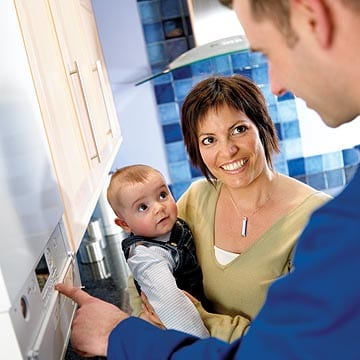If I had a euro for every person I’ve spoken to over the last ten years who thought that B2B and B2C marketing strategies and techniques were exactly the same, I would be richer than Lady Ga Ga. Instead I have to be the ‘monster’ and inform them that actually… they’re nothing alike.
This blog post discusses how consumers think for selling in the B2C (Business to Consumer) sector.
Decision Making
When it comes to the DMU (Decision Making Unit), in B2C marketing, this is usually just one person – the consumer. Think of purchases for CDs, can of coke or a pair of shoes. Holidays may involve a group and decisions for household purchases may then include a significant other.
Many items for consumers are commonly low-cost ‘want’ items. Decisions can be spontanteous and completely unplanned. They may be browsing a site and notice an advert, click on it and buy. They may be chatting to a friend who discusses a product, go to the website and buy. This means that more B2C purchases happen in a shorter time-frame.
In marketing terms ….
It means that real-time communications are a fantastic way for any buiness in the consumer industry to precede a sale. Pay per click advertising, banner adverts and social media incentives are all strong streams for a quick sale.
Priorities
The priories of consumer marketing are personal:
- Will I use it?
- Do I really want it?
- How will it help me?
- Will it last for as long as I need it?
If the cost is low, then a consumer is more easily convinced (yes it’s true – how many times have we been tempted by that cute little top or bottle of cold coke on a warm day?)
In marketing terms …
If you know the priorities of the consumer and if you know how to appeal to their ‘wants’, then you’ll sell. When it comes to the crunch, you risk 85% of sales when they ‘click’ away from your site, page or advert. Hold their attention by tapping into their priorities and ensure you link to the product or cart to make that all-important transaction process nice and easy. Images speak louder than words ever will, so include plenty of snaps and 360 degree tours.
Referrals
Referrals tend to be friends and familiy members and online searches for reviews. Other consumer opinions are important, and unsurprisingly, the closer the referrer is to the consumer, the more likely they are to buy themselves. On-site product reviews and Facebook reviews are your best friends. Third party websites such as Trip Adviser and Quipe are popular, along with forums like Boards.ie and Peoples Republic of Cork.
In Marketing terms …
Pay close attention to all reviews online. Showcase the good AND the bad, and respond to the ones you can. Include reviews on your website to save people searching for them. Louder Voice is a great one! Add Reviews to your Facebook page so fans can read them.
Costs
Many products and services in the consumer industry are one-offs or low-cost, these include a chocolate bar or pair of sandles. I’ll also add here that the consumer pays for them – extremely important to note, because the liability and choice is 100% is theirs.
Consumer decisions tend to be quicker than business ones, because the liability is personal.
If a consumer suffers from buyers remorse or makes an error of judgement, there is no’one to answer to. Consumers will weigh this up when deciding to buy or not. As the majority of buying decions are based on ‘wants’, the emotional response takes over and cost has less of an impact in the decision making.
Items related to our primary needs (food, warmth and security) are also common for consumers. Primary need items may have a larger cost attached, but choices are limited, so the sale is almost a given. It’s more a matter of who to buy from, than, if you buy at all.
In Marketing terms …
In supermarkets, you will find items like gum, chocolate bars and sweets are placed near the till. This is a marketing ply to gain a ‘few extra euro’ in the till. Supermarkets are smart and know their customers. They knew that smaller items, especially those which are attractive such as sweets, are likely to to added in the trolley as an after thought.
Online, you can provide incentives to purchase additional items. For certain hotels, you book your room, then before you pay you are offered a chance to buy dinner, flowers, chocolates and even a room upgrade.
You will notice that Amazon shows customers who brought other products as well as what you are buying – they too know the power of persuading the customer to part with a bit cash just before the sale.
What other ways can you persuade the consumer to buy?
What channels work best to appeal to consumers?
What techniques have you found that work?
Next month, I’ll discuss how B2B differs from B2C and how businesses make decisions.


